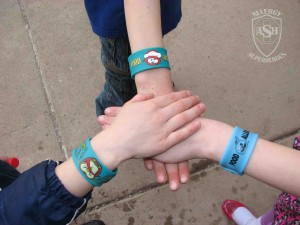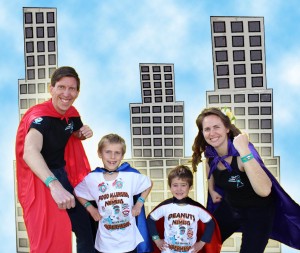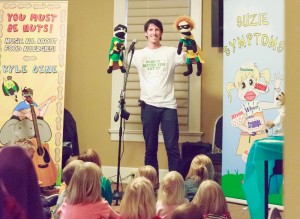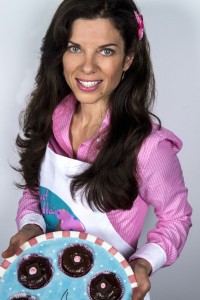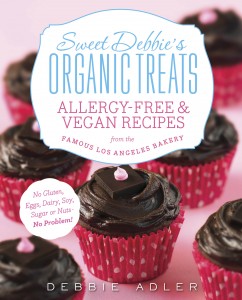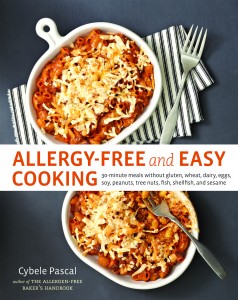A great new book by Nicole Ondatje was published this week. Read below for an interview with Nicole about this great new children’s book!

Nicole, you have a new book out called, “Not Today, Butterflies! A Book About Food Allergy Anxiety.” What gave you the idea to write this book?
My nine-year-old daughter has severe anaphylactic food allergies. At age four, she started experiencing anxiety about her annual allergy skin prick tests, attending birthday parties, visiting family, and eating at restaurants. Searching online, I could find children’s books regarding food allergies and a handful of children’s books regarding anxiety, but there weren’t books that specifically and directly addressed food allergy anxiety in children. So, I started researching techniques to help children manage their anxiety, and testing which approaches helped my daughter the most.
When she turned five, my daughter enrolled in a clinical trial for the peanut patch, adding blood draws and food challenges to her long list of anxiety-provoking situations. My approach was to help her write and illustrate a story in which she overcame her fears of going to her peanut patch appointment by being brave (and getting a sweet treat afterwards). She felt that the story, called “Rosy Goes to the Doctor,” helped her prepare for future appointments. That is how I was inspired to write a children’s book to help my daughter and other children like her who struggle with the daily challenges of living with a food allergy.
The illustrations in the book are wonderful. Did you do the artwork also?
I love the illustrations! Bumblebee Books and Olympia Publishers provided me with an illustrator named M. Das. I felt that it was important that the illustrations were somewhat realistic and included imagery of a human child to whom children could truly relate, rather than a fictitious animal character. My daughter and I worked together to provide the illustrator with detailed descriptions of each character in the book and what we wanted to see on every page. It was really neat to see our words come to life in the drawings that came back to us.
As the parent of a child with food allergies, how much of the book was written from you or your daughter’s personal experiences?
All of it! Both my husband and I have an anxiety disorder that we have to manage, and we experience additional anxiety about our daughter’s food allergy. Our daughter has experienced terrible anxiety in anticipation of her allergy appointments, going to play dates and birthday parties, being different from her friends and schoolmates, and speaking up to friends as well as strangers about her allergy. It breaks my heart that she lives each day with this nagging fear about the lurking danger of her food allergy. Our approach has always been to educate and empower her to learn what she can do to keep herself safe. As a family, we have tried all of the “Ways to Help Your Child Manage Anxiety” included in the back of the book (except the proximity food challenge and happy visit), and we’ve practiced them for many years to learn what techniques help us the most.
I love the birthday party situation in the book where Quinn has to speak up for herself. I felt butterflies for her! How did you teach your daughter about handling such a situation?
It started with reading a lot of children’s books about food allergies together and having an open dialogue with her. In fact, our first ever food allergy book was your book “Allie the Allergic Elephant: A Children’s Story of Peanut Allergies”. We read books that encourage speaking up about your food allergy, like “The Peanut Pickle” by Jessica Jacobs, and “Food Allergies and Me: A Children’s Book” by Juniper Skinner. We read books that help you prepare for a social event and learn how to stay safe, like “The No Biggie Bunch” series by Dr. Michael Pistiner, and “Joey Panda and His Food Allergies Save the Day” by Drs. Amishi Murthy and Vivian Chou. We read other books about calming anxiety in children, like “Don’t Panic, Annika” by Juliet Clare Bell and “Sea Otter Cove: A Relaxation Story” by Lori Lite. We also encouraged our daughter to practice speaking to strangers about her allergy by having her place her order at restaurants and ask about their food allergy practices, and by participating whenever we trained friends, family, school staff, and caregivers on managing her food allergies (in fact, these were practices we learned from you and Morgan!).
It took several years and many birthday parties before any of us felt reasonably calm about the experience. We still follow the same process of checking with the party planner ahead of time on what food will be served, reading all of the ingredient labels, staying away from foods without a label, and making sure we have two epinephrine auto-injectors with us. As my daughter has gotten older, it upsets her more to bring her own safe treat and eat something different from the other kids at the party. Sometimes we are able to work with the other parent or bakery to ensure the shared party treats are safe for my daughter to eat. But we continue to work on helping her accept being “different” from her peers. Maybe that will be my next book topic!
In the Notes to Parents in the back of the book, you mention teaching a child mindfulness. What’s the best way that you’ve found to have a child be willing to try this skill?
Number one is finding the right tools, and number two is setting an example by practicing mindfulness yourself in front of your child. I’ve included a number of mindfulness tools for kids in the back of the book, but two additional tools that we love are “The ABCs of Yoga for Kids” learning cards and “50 Mindfulness Activities for Kindness, Focus, and Calm” cards. We practice these cards together, often before bed. A great book to help teach your kids about mindful belly breathing is “Sea Otter Cove: A Relaxation Story” by Lori Lite. We sit and practice different breathing techniques together, starting when we are already calm. As a parent, I absolutely loved Dr. Kristen Race’s “Mindful Parenting” book along with all of her amazing techniques for busy parents and the entire family. My child has witnessed firsthand how I can maintain more peace and levelheadedness when I am disciplined with my daily meditation practice. When I am feeling particularly frustrated or stressed in front of my child, she sees me stop, pause, and take a breath, or blow out an elongated breath, or remove myself from a heated situation and find ways like reading, listening to music, or taking a bath to calm myself. She also sees me push myself to do something in spite of my fear, and I help her recognize all of the instances in which she has been brave despite her food allergies.
Is there anything else you’d like to tell us?
I truly hope that this book helps children and families with food allergies. It’s based on my own personal experience, research that I’ve done through books, conferences, webinars, and meeting with a child psychotherapist whose own child has food allergies. Before publication, it was vetted by that same psychotherapist as well as my child’s board certified asthma and allergy doctor.
Thank you.
Thank you Nicole!

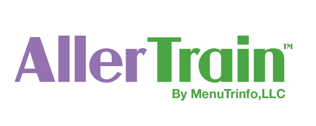

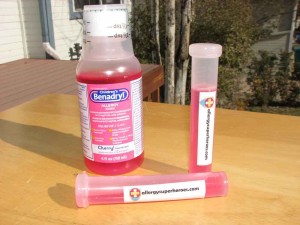 celets do really well (and we’re about to release them in more allergens) and everybody loves our single-dose liquid medicine bottles.
celets do really well (and we’re about to release them in more allergens) and everybody loves our single-dose liquid medicine bottles.